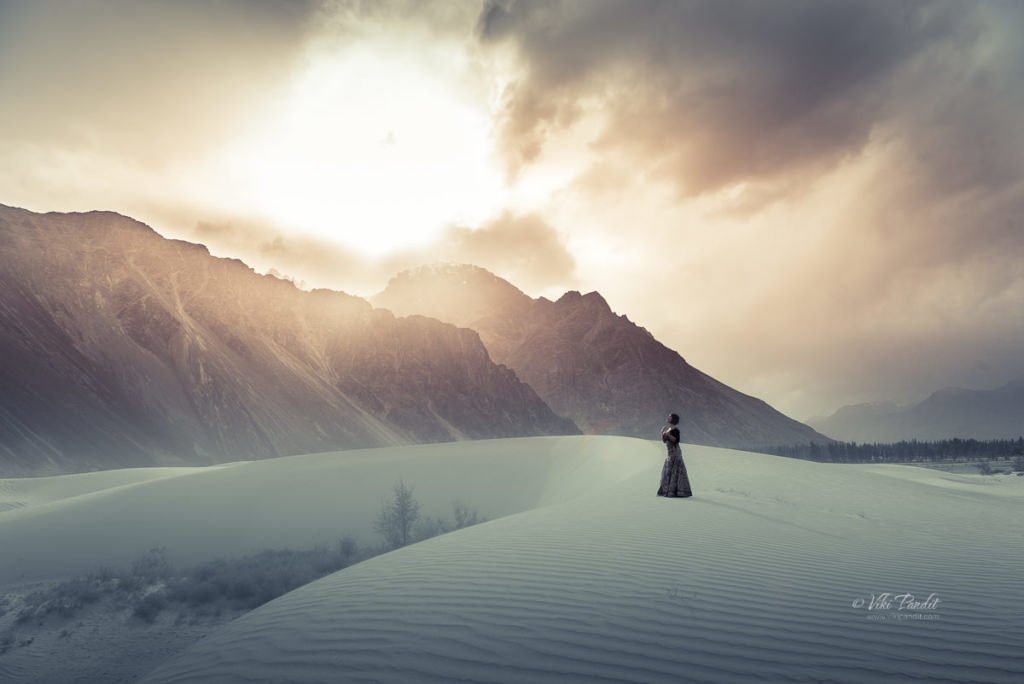
Dunes of Nubra
Today, we embark on a journey to Nubra, a cold desert situated at an elevation of 10,000 feet above sea level. The climate in this remote village can be quite unforgiving, particularly when the sun retreats behind the clouds. The robust breeze sweeps through, continuously rearranging the fine sands and reshaping the dunes in this rugged landscape.